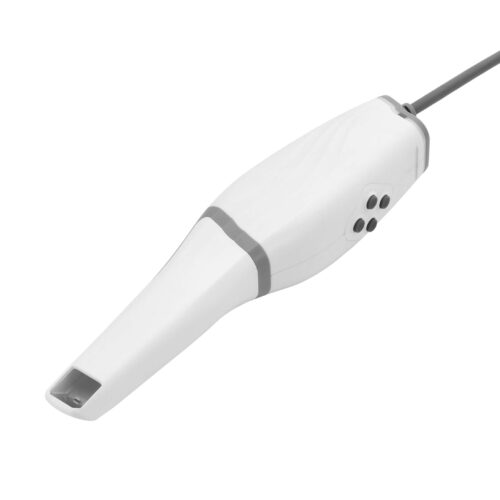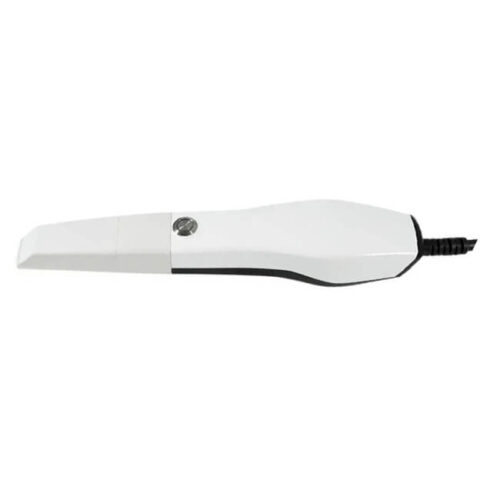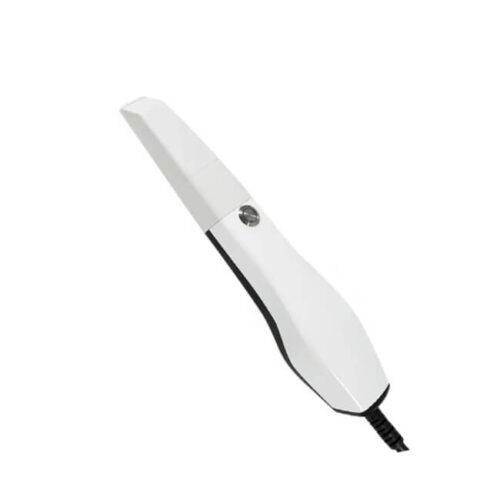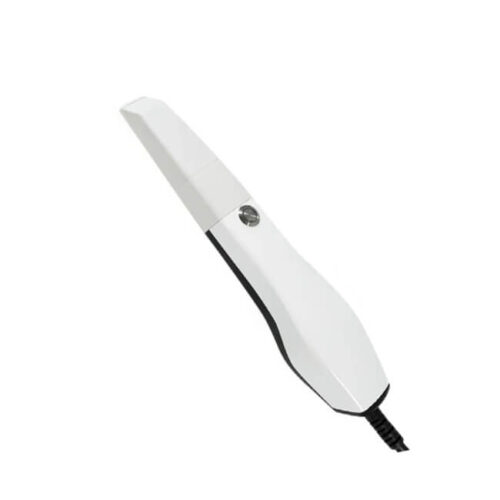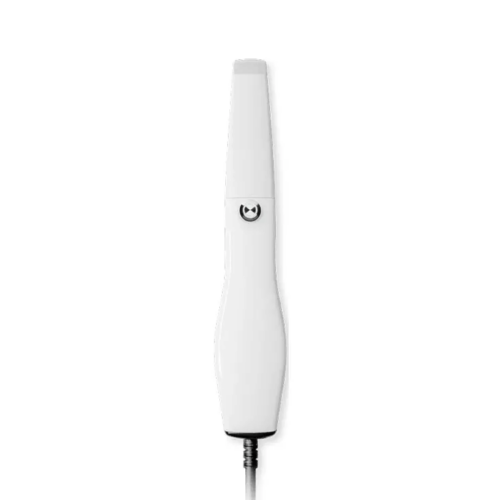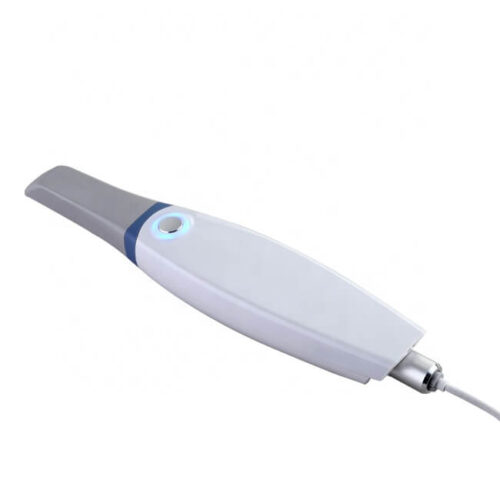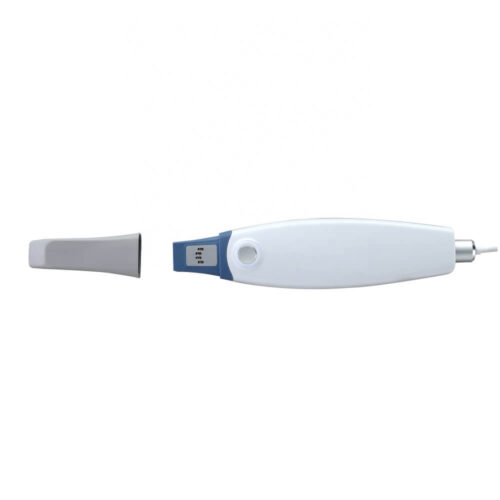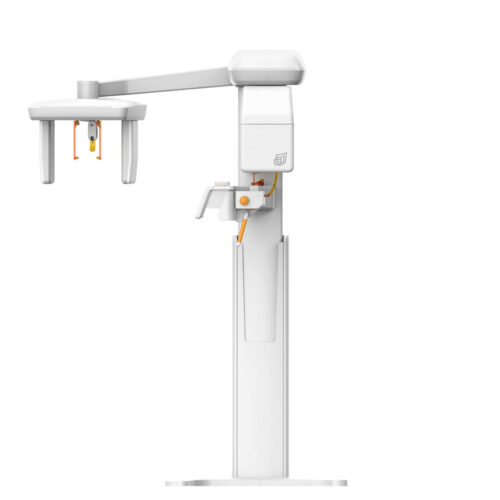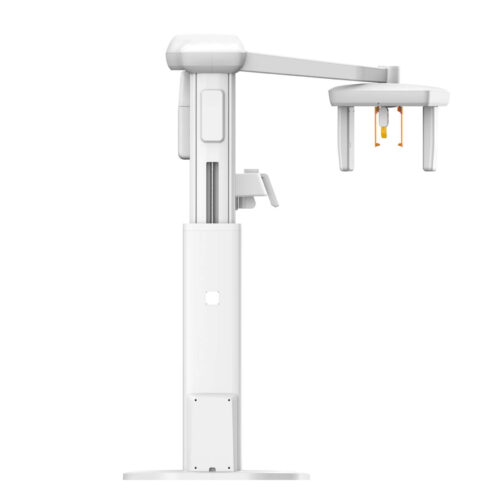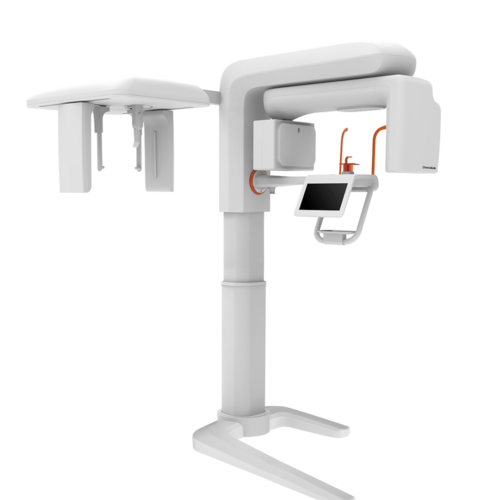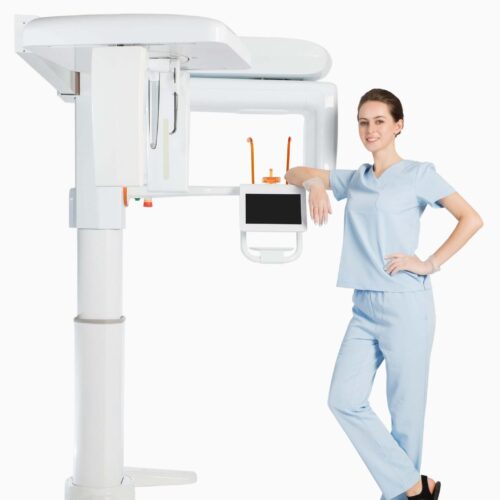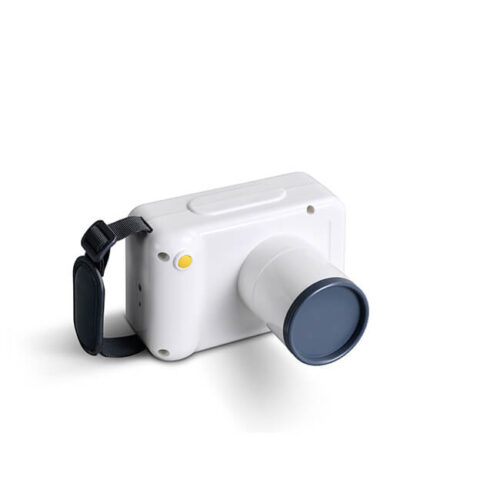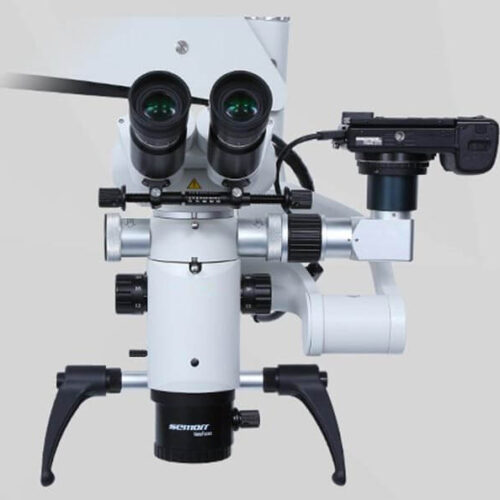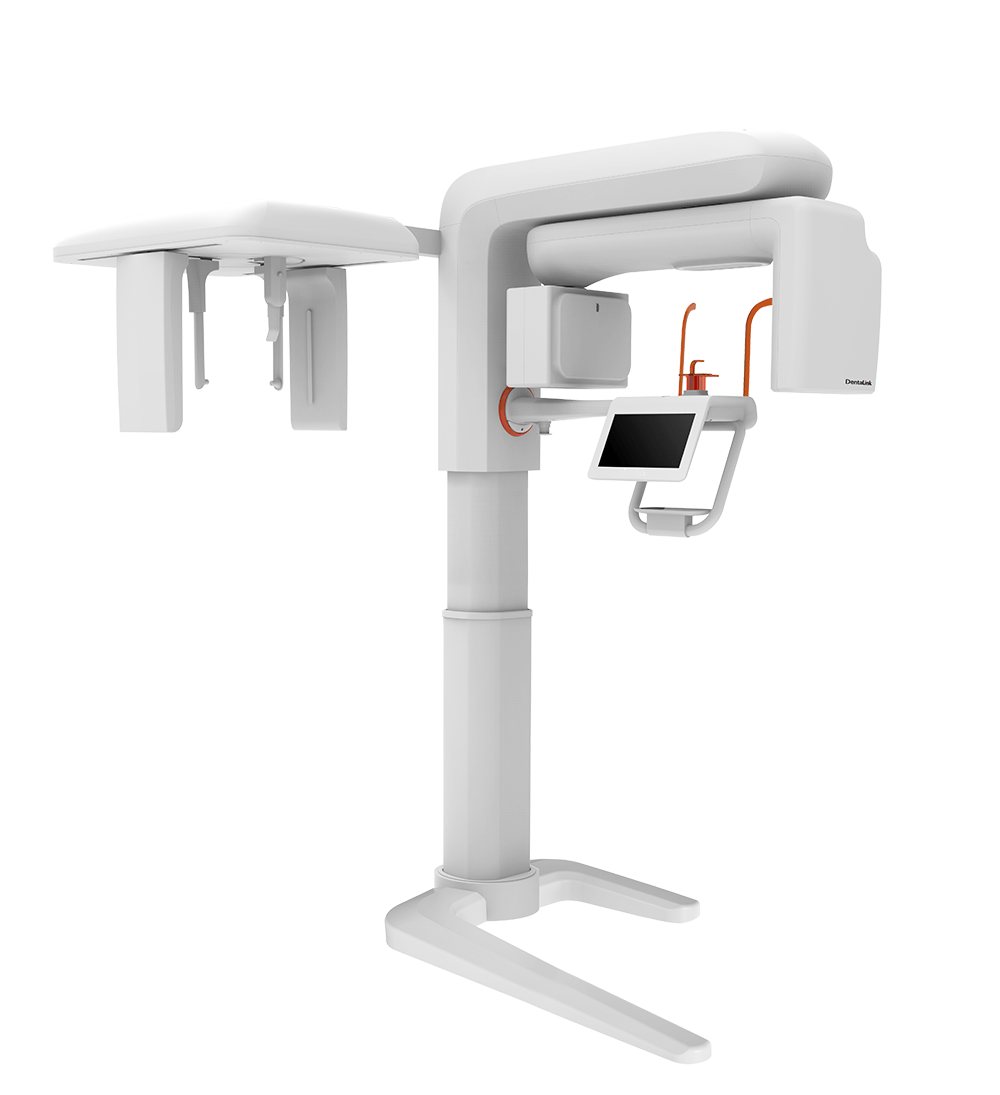Your Dental Cbct Scanner Supplier
Choosing “SourcifyChina” Factory for purchasing a dental CBCT scanner from China ensures top-quality products. With rigorous quality control, they deliver reliable and high-performance scanners that meet international standards.
Their competitive pricing makes advanced dental imaging technology more accessible. Buyers benefit from cost savings without compromising on the quality of the scanner.
“SourcifyChina” offers exceptional customer service with quick response times. Their knowledgeable staff guide buyers through the purchasing process, ensuring all questions and concerns are addressed promptly.
Importing from China can be complex, but “SourcifyChina” simplifies logistics. They handle shipping details efficiently, minimizing delays and ensuring timely delivery of your dental CBCT scanner.
Customization is a key advantage. “SourcifyChina” provides tailored solutions to meet specific needs, offering a range of features to suit diverse dental practices and enhance patient care.
Ultimately, choosing “SourcifyChina” Factory means partnering with a trusted supplier dedicated to excellence, cost-effectiveness, and customer satisfaction. This ensures a seamless purchasing experience for advanced dental imaging technology.
intraoral scanners
intraoral scanners
intraoral scanners
intraoral scanners
CBCT Machine
Dental X Ray Machine
Dental Microscope
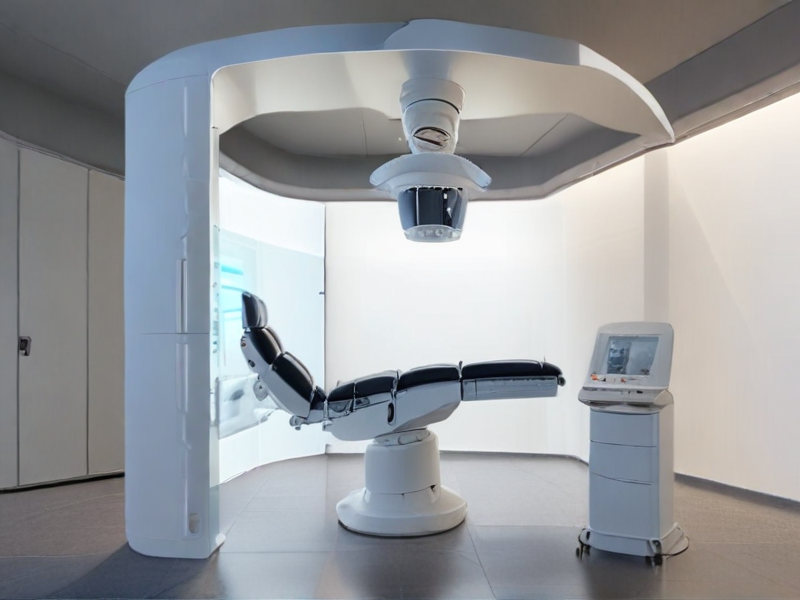
Dental Cbct Scanner Type Options
A Dental CBCT (Cone Beam Computed Tomography) scanner provides three-dimensional images crucial for dental diagnosis and treatment planning. These scanners vary by size, field of view (FOV), and specific applications.
– NewTom VGi EVO: High-resolution imaging, selective FOV, reduced radiation.
– Carestream CS 9600: Versatile, adjustable settings, AI-enhanced.
– i-CAT FLX: Detailed images, customizable scan modes, lower dose.
– Planmeca ProMax 3D: Comprehensive FOV options, advanced software.
– Sirona Orthophos SL: Accurate diagnostics, specialized applications.
– Vatech Pax-i3D Green: Eco-friendly features, multi-functional.
– PreXion3D Excelsior: Superior clarity, enhanced zoom capabilities.
Dental Cbct Scanner Application Solution
A dental CBCT scanner is a vital tool in modern dentistry, providing 3D imaging for accurate diagnosis and treatment planning. It offers comprehensive views of teeth, bone, and tissues, enhancing precision and patient outcomes.
– Implant Planning: Ensures precise placement of dental implants, verifying bone density and anatomical structures.
– Orthodontics: Assists in creating detailed 3D models for precise orthodontic treatments and appliance designs.
– Endodontics: Facilitates the identification of complex root canal structures and periapical lesions.
– Surgical Guidance: Supports the planning and execution of surgical interventions such as extractions and bone grafts.
– TMJ Analysis: Offers detailed images of the temporomandibular joint for diagnosing and treating disorders.
– Pathology Detection: Identifies cysts, tumors, and other pathologies at an early stage for prompt treatment.
– Sinus Evaluation: Assesses the anatomy and health of the sinuses, relevant for sinus lift procedures and other treatments.
– Trauma Assessment: Provides detailed imaging to evaluate fractures and other dental traumas.
– Sleep Apnea Analysis: Aids in diagnosing obstructive sleep apnea by examining airway structures.
– Periodontal Disease Evaluation: Offers precise imaging to assess bone loss and periodontal disease progression.
– Bone Quality Assessment: Evaluates bone density and quality, crucial for various dental procedures.
– Impact Assessment: Helps in the accurate diagnosis and treatment planning of impacted teeth.
– Facial Reconstruction: Provides detailed 3D images for reconstructive surgery post-trauma or congenital defects.
– Pediatric Dentistry: Useful in monitoring craniofacial development and diagnosing pediatric dental issues.
– Education and Communication: Enhances patient understanding of conditions and treatment plans through visual aids.
– Minimally Invasive Procedures: Improves the precision of minimally invasive dental procedures, reducing recovery time.
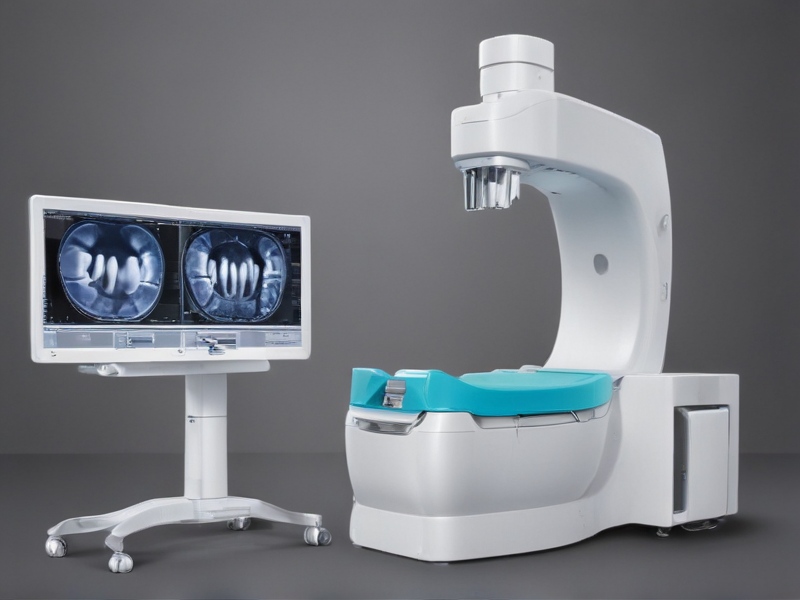
General Dentists
A Dental Cone Beam Computed Tomography (CBCT) scanner is a transformative tool for modern general dentistry, revolutionizing diagnostic and treatment capabilities. Unlike traditional 2D X-rays, a CBCT scanner provides three-dimensional imaging of dental structures, soft tissues, nerve pathways, and craniofacial bone in a single scan. This level of detail is invaluable for precise diagnosis and treatment planning. It aids in detecting issues that are often missed with conventional imaging techniques, such as root fractures, complex canal structures, and exact bone density, making it particularly useful for procedures like implant placement, root canal therapy, and orthodontic assessments. The high-resolution images also allow for better communication with patients, as complex conditions and proposed treatments can be explained more clearly.
Implementing a CBCT scanner in a general dental practice offers considerable benefits in terms of workflow efficiency and patient outcomes. The scanning process is quick and comfortable, reducing the need for multiple visits and follow-up appointments. Moreover, the ability to view intricate anatomic details aids in minimizing surgical risks and improving the accuracy of interventions. For example, in implantology, precise measurements and bone quality assessments ensure optimal implant positioning, reducing the likelihood of complications. Similarly, in endodontics, detailed visualizations of root canal morphology enhance the success rate of treatments. While the initial investment in CBCT technology may be significant, the long-term advantages of improved diagnostic accuracy, enhanced patient trust, and better clinical outcomes make it a worthwhile addition to any general dental practice.
Orthodontists
A dental Cone Beam Computed Tomography (CBCT) scanner has become an invaluable tool for orthodontists, revolutionizing the way they diagnose and plan treatments. Unlike traditional 2D radiographs, CBCT scans provide three-dimensional images of the teeth, jaw, and surrounding anatomical structures, offering unparalleled detail and precision. This comprehensive visualization allows for more accurate assessment of complex cases, such as impacted teeth, root morphology, and temporomandibular joint disorders. For orthodontists, this translates to more informed decisions, better treatment planning, and improved outcomes for their patients. The ability to view anatomical structures in multiple planes eliminates much of the guesswork, ensuring that interventions are both effective and minimally invasive.
Moreover, the CBCT scanner enhances patient communication and education, as it provides clear and understandable visuals that can help in explaining diagnoses and treatment plans. Patients are more likely to adhere to treatment and feel engaged when they have a clearer understanding of their dental conditions and the proposed solutions. From creating precise orthodontic appliances to planning surgical interventions, the utility of the CBCT scanner extends through every phase of orthodontic care. Furthermore, advancements in technology have made these devices more accessible and their usage less time-consuming, enabling orthodontists to integrate them seamlessly into their practice for higher efficiency and better patient care.
Prosthodontists
Dental CBCT (Cone Beam Computed Tomography) scanners have revolutionized the field of prosthodontics by providing unparalleled three-dimensional imaging of the oral and maxillofacial region. For prosthodontists, this technology offers detailed insights into bone structure, tooth orientation, and critical anatomical landmarks, facilitating precision in diagnosis and treatment planning. Unlike traditional 2D radiographs, CBCT scans capture volumetric data, enabling practitioners to navigate through the scanned area in multiple planes (axial, coronal, and sagittal). This capability is particularly advantageous when assessing bone density and quality for implant placement, evaluating the condition of the temporomandibular joint, or planning complex restorative procedures. By providing a comprehensive view of the patient’s oral anatomy, CBCT scanners enhance the accuracy and predictability of prosthodontic treatments, ultimately leading to better patient outcomes.
Furthermore, the use of dental CBCT scanners significantly reduces the risk of complications during procedures. For instance, the detailed 3D images help in identifying vital structures such as nerves and sinus cavities, which are crucial to avoid during surgical interventions. For prosthodontists involved in full-mouth reconstructions or who are addressing challenging cases like impacted teeth or facial trauma, the ability to visualize the precise configuration of hard and soft tissues is invaluable. Additionally, the integration of CBCT data with computer-aided design and manufacturing (CAD/CAM) systems enhances the precision of prostheses fabrication, ensuring a better fit and comfort for the patient. Despite being a relatively more expensive investment, the advantages of improved diagnostic accuracy, enhanced treatment planning, and reduced chair time make the CBCT scanner an indispensable tool in modern prosthodontics practice.
Dental Laboratories
The dental CBCT (Cone Beam Computed Tomography) scanner has revolutionized dental laboratories by providing highly detailed 3D imaging that significantly enhances diagnostic accuracy and treatment planning. This advanced imaging technology delivers comprehensive views of the patient’s dental structures, including bone, teeth, and soft tissues, in a single scan. With its ability to capture minute details and precise measurements, the CBCT scanner allows dental technicians to design more accurate and customized dental restorations, implants, and orthodontic appliances. The integration of CBCT imaging in dental labs not only improves the quality of the final products but also reduces the risk of errors and the need for adjustments, thus saving time and resources.
Furthermore, the utilization of dental CBCT scanners enhances communication and collaboration between dental laboratories and clinicians. By sharing detailed 3D images and diagnostic information, dental professionals can work more efficiently and effectively to develop tailored treatment plans that meet each patient’s unique needs. This improved level of coordination leads to better patient outcomes and higher satisfaction rates. Additionally, the non-invasive nature of CBCT scanning minimizes patient discomfort and exposure to radiation compared to traditional imaging methods. Overall, the adoption of dental CBCT scanners in dental laboratories represents a significant advancement in dental technology, offering numerous benefits that elevate the standards of dental care and lab operations.
Pediatric Dentists
A dental CBCT (Cone Beam Computed Tomography) scanner is a transformative imaging tool for pediatric dentists, offering enhanced diagnostic capabilities and precision treatment planning. This advanced imaging technology produces three-dimensional images of a child’s dental structures, soft tissues, nerve pathways, and bone in a single scan. The high-resolution 3D images allow pediatric dentists to see intricate details that traditional 2D X-rays may miss, such as the exact position of unerupted or impacted teeth, root fractures, and developing tooth anomalies. Moreover, the ability to visualize the spatial relationships of teeth and jaws in three dimensions significantly improves the accuracy of diagnosing conditions and planning interventions, which is especially important in the dynamic and developmental context of pediatric dentistry.
The use of CBCT is also patient-friendly, making it particularly suitable for a younger population. The scanning process is quick, typically completed within a minute, which helps to minimize discomfort and anxiety for children. Additionally, modern CBCT machines are designed to use lower doses of radiation compared to conventional CT scans, addressing concerns about exposure in a vulnerable age group. This balance of high-quality imaging with minimized radiation exposure aligns well with the goals of pediatric dental care, which prioritizes the health and safety of young patients. By integrating CBCT technology into their practices, pediatric dentists can enhance their diagnostic accuracy, improve treatment outcomes, and provide a higher standard of care tailored to the unique needs of children.
Educational Institutions
Dental Cone Beam Computed Tomography (CBCT) scanners have revolutionized dental education by providing high-resolution, three-dimensional imaging crucial for detailed anatomical studies and precise treatment planning. Unlike traditional two-dimensional X-rays, CBCT scanners offer volumetric data that allows students and researchers to explore intricate dental structures, including bone, teeth, and soft tissues, with exceptional clarity. This advanced imaging technology is instrumental in diagnosing complex dental conditions such as impacted teeth, temporomandibular joint disorders, and maxillofacial abnormalities. By incorporating CBCT scanners into their curriculum, educational institutions can significantly enhance the learning experience, providing future dental professionals with the cutting-edge tools necessary for modern dental practice.
Moreover, the integration of dental CBCT scanners into educational settings fosters a comprehensive understanding of spatial anatomy and pathology, which is critical for both surgical planning and orthodontic assessments. Students can engage in interactive case studies where they interpret CBCT data, formulate treatment plans, and even simulate surgical procedures using virtual models derived from scans. This hands-on approach not only improves diagnostic accuracy but also bridges the gap between theoretical knowledge and practical skills. Institutions that invest in CBCT technology thereby position themselves at the forefront of dental education, ensuring their graduates are well-prepared to meet the demands of contemporary dental care with confidence and competence.
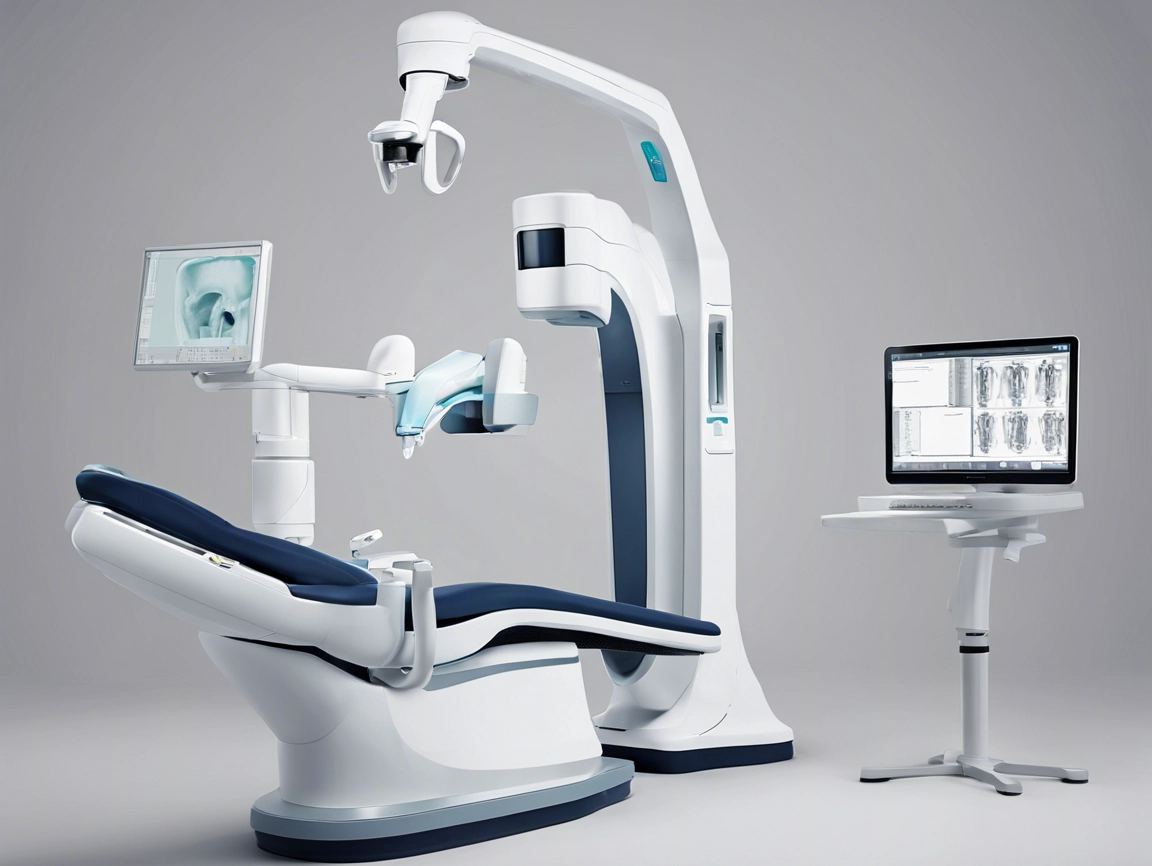
Dental Cbct Scanner Material
The “SourcifyChina dental CBCT scanner” is constructed using high-quality materials that ensure durability and precision. The scanner’s frame is typically made from robust, corrosion-resistant metals such as stainless steel. This enhances the structural integrity while extending the lifespan of the device.
The imaging components employ advanced semiconductor materials. Silicon-based sensors capture high-resolution images, providing detailed 3D dental scans. The accuracy is further enhanced by the use of specialized coatings on the lenses, which reduce glare and optical distortion.
User interfaces and controls are crafted from high-grade polymers. These plastics are both lightweight and sturdy, allowing for easy handling and repeated use. Touchscreen panels often feature scratch-resistant glass, enhancing durability.
Internal circuitry relies on gold-plated connectors and high-quality PCB materials. These ensure stable electrical performance and reduce the risk of signal loss. The efficient thermal management systems utilize heat-resistant alloys to dissipate heat effectively, maintaining consistent performance.
In summary, the “SourcifyChina dental CBCT scanner” integrates a meticulously selected array of materials. From corrosion-resistant metals to advanced semiconductor components, every element contributes to its reliability, precision, and long operational life, making it an invaluable tool in dental diagnostics.
Quality Control Manufacturing Process
SourcifyChina’s dental CBCT scanners undergo a meticulous quality control manufacturing process to ensure high performance and reliability. It initiates with the procurement of high-grade raw materials, ensuring they meet stringent industry standards.
The manufacturing process involves precision engineering and state-of-the-art technology. Each component is carefully assembled by skilled technicians, with multiple inspections to ensure optimal alignment and functionality.
Advanced testing procedures, including software and hardware diagnostics, are conducted at various stages. These rigorous tests confirm that the CBCT scanners meet both national and international quality and safety standards.
To guarantee consistency, production lines are equipped with real-time monitoring systems. These systems detect and address any irregularities instantly, maintaining the integrity of the final product.
SourcifyChina prioritizes continuous improvement and employee training. Regular workshops and updates on new technologies ensure that teams remain adept at utilizing cutting-edge manufacturing techniques.
Final quality assurance checks involve comprehensive performance evaluations. Each dental CBCT scanner is subjected to stress tests, ensuring it can withstand rigorous clinical use without compromising accuracy or durability.
SourcifyChina’s commitment to quality extends after the manufacturing process. Post-production, scanners undergo calibration and are certified before distribution. Quality control does not end with production; feedback is collected from end-users to drive future enhancements.
In conclusion, SourcifyChina’s meticulous quality control ensures their dental CBCT scanners are robust, precise, and reliable. From raw material selection to final product evaluation, each step adheres to high-quality standards. This dedication ensures that dental professionals receive equipment they can trust, enhancing patient care across the board.
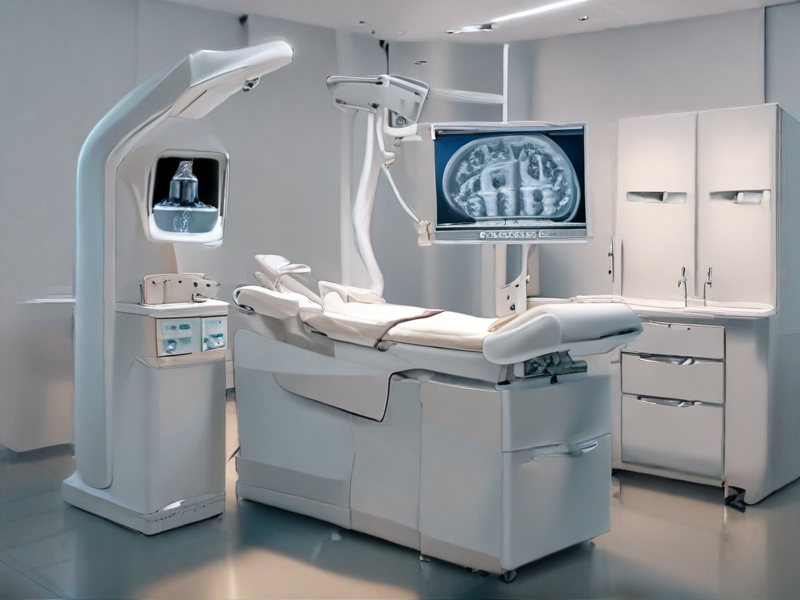
Why Choose Dental Cbct Scanner Capabilities
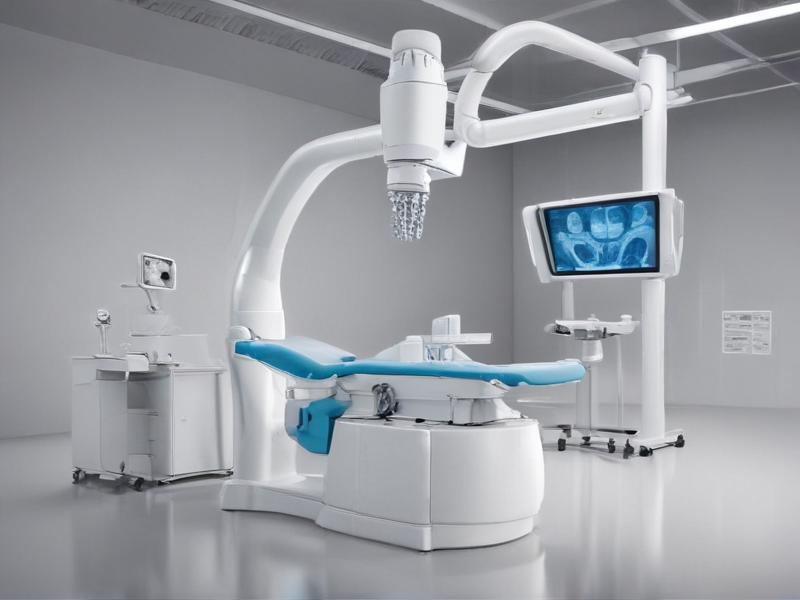
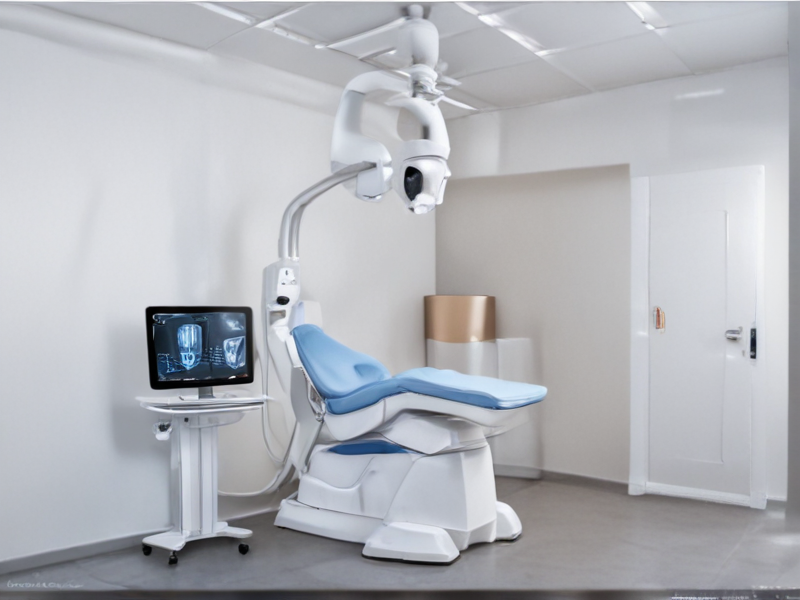
The SourcifyChina dental CBCT scanner offers precise 3D imaging crucial for dental diagnosis and treatment planning. Its high-resolution scans ensure detailed images, aiding in accurate assessments for implants, orthodontics, and endodontics.
With advanced software integration, this CBCT scanner provides seamless workflow between capturing images and analysis. Dentists benefit from its user-friendly interface and efficient data management, allowing for faster case evaluations and improved patient outcomes.
The scanner features a low-dose radiation option, prioritizing patient safety while maintaining image quality. Its adaptive protocols adjust to various dental applications, ensuring versatile use in any modern dental practice.
Key innovations like real-time imaging and enhanced digital outputs enable better collaboration with dental labs and specialists. This streamlines the process from diagnosis to treatment, embodying the essence of modern dental technology.
Overall, the SourcifyChina dental CBCT scanner packs cutting-edge technology into a cost-effective solution. It stands out for its reliability, detailed imaging, and comprehensive support, making it an indispensable tool in contemporary dental care.
Dental Cbct Scanner Manufacturer in China
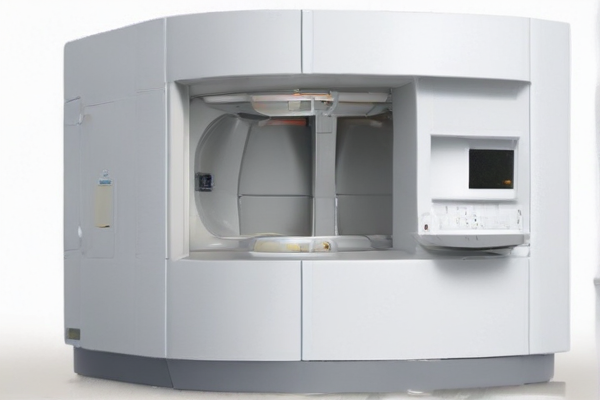
Advantages Benefits
A Dental CBCT (Cone Beam Computed Tomography) scanner offers advanced imaging capabilities that significantly improve diagnostic accuracy and treatment planning for dental professionals.
– Enhanced Imaging: Provides 3D images with high resolution, capturing intricate details of bone structure, teeth, and soft tissues.
– Improved Diagnostics: Helps in identifying dental issues such as root fractures, bone irregularities, and impacted teeth, which are not visible in traditional X-rays.
– Accurate Treatment Planning: Useful for implant placement, orthodontic assessments, and endodontic procedures, ensuring better patient outcomes.
– Reduced Radiation Exposure: Delivers lower radiation doses compared to conventional CT scans, making it safer for patients.
– Quick and Non-Invasive: Offers fast scanning times and comfortable patient experience, minimizing the need for retakes.
– Comprehensive View: Enables visualization of anatomical structures in multiple planes, aiding in comprehensive examination and precise intervention.
– Efficient Workflow: Integrates seamlessly with dental practice management software, streamlining patient records and treatment plans.
– Cost-Effective: Reduces the need for multiple diagnostic tests, saving time and resources for both patients and practitioners.
By incorporating Dental CBCT scanners into their practice, dental professionals can enhance their diagnostic capabilities, improve treatment precision, and deliver a higher standard of care.
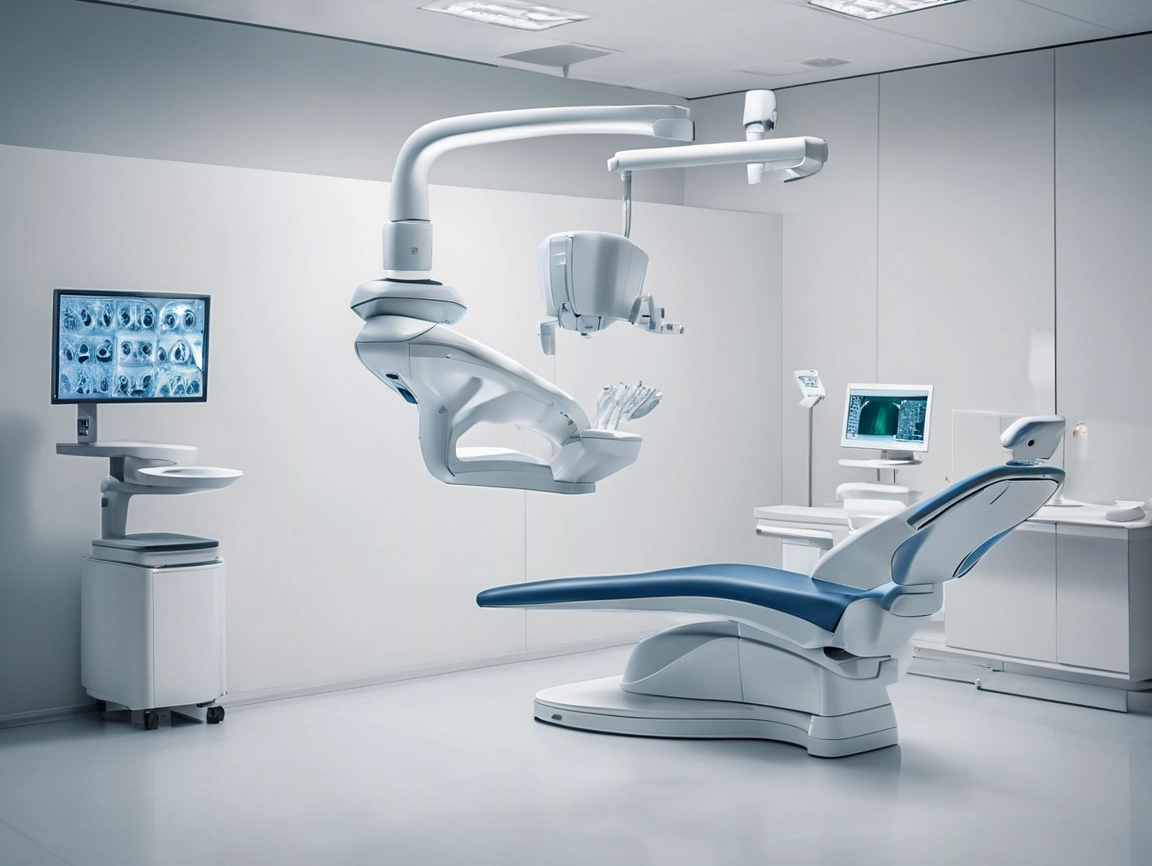
Features
Dental CBCT Scanner Features
A dental CBCT (Cone Beam Computed Tomography) scanner offers detailed 3D imaging essential for precise diagnosis and treatment planning in dental practices.
– High-Resolution Imaging: Produces clear, detailed images of teeth, bone, and soft tissues.
– Low Radiation Dose: Ensures patient safety with minimal radiation exposure compared to traditional CT scans.
– 3D Reconstruction: Allows comprehensive 3D views for accurate anatomical assessment.
– User-Friendly Interface: Simplified operation through intuitive software, enhancing workflow efficiency.
– Multifunctional: Supports various dental procedures, including implantology, endodontics, and orthodontics.
– Rapid Scan Times: Delivers quick imaging results, reducing patient discomfort.
– Compact Design: Space-saving layout suitable for various dental clinic sizes.
– Versatile Positioning: Capable of scanning patients in standing, seated, or lying positions for convenience.
– DICOM Compatibility: Facilitates easy integration with existing medical imaging systems.
– Enhanced Diagnostic Capabilities: Provides finer detail for better detection of pathology and assessment of bone quality.
– Patient-Friendly: Quiet operation and ergonomic design improve patient comfort during scans.
– Adjustable Field of View (FOV): Customizable scan areas to focus on specific regions, reducing unnecessary exposure.
– Automatic Exposure Control: Optimizes image quality while minimizing patient dose.
These features make dental CBCT scanners an invaluable tool for modern dental diagnostics and treatment planning.
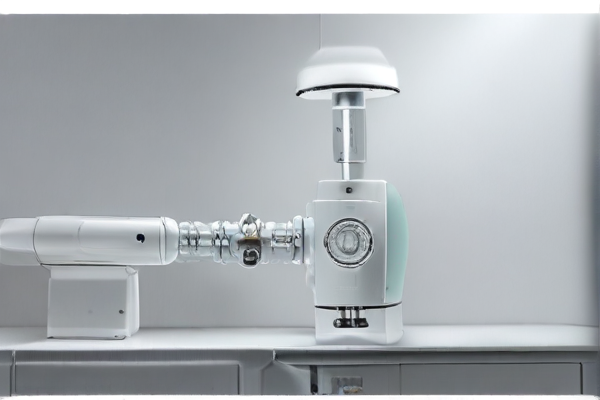
Custom Projects
SourcifyChina specializes in custom dental CBCT scanners, designed to cater to the specific needs of dental practices. Our state-of-the-art technology ensures high-quality images, aiding in accurate diagnostics and treatment planning.
We collaborate closely with dental professionals to understand their requirements and deliver tailored solutions. This commitment to customization distinguishes us in a competitive market and provides users with optimized, efficient tools for clinical use.
Our products are rigorously tested to meet international standards, ensuring reliability and patient safety. Each CBCT scanner is built with precision and durability, making it a valuable investment for any dental practice.
In addition to product excellence, SourcifyChina offers comprehensive support and training to maximize the utility of our custom CBCT scanners. Our expert team is available for technical assistance, ensuring smooth operation and minimal downtime.
Ultimately, SourcifyChina’s dedication to quality, customization, and customer service makes us a trusted partner for dental professionals seeking advanced imaging solutions. With our cutting-edge CBCT scanners, we empower practices to deliver exceptional care and drive better patient outcomes.
Dental Cbct Scanner for Different Industry
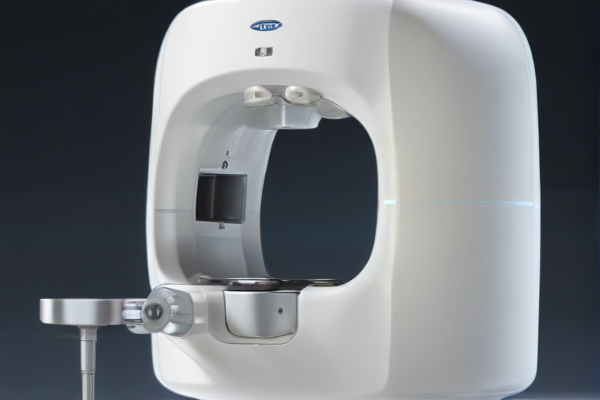
Restorative Dentistry
Restorative dentistry has greatly benefited from advancements in imaging technology, particularly with the advent of dental Cone Beam Computed Tomography (CBCT) scanners. These sophisticated devices provide highly detailed, three-dimensional images of the dental structures, including teeth, bone, nerve pathways, and soft tissues in the craniofacial region. By producing cross-sectional views, dental CBCT scanners allow for precise mapping of a patient’s dental anatomy, which is crucial for the accurate diagnosis and treatment planning of restorative procedures. For instance, when planning for dental implants, CBCT scans offer invaluable insights into bone density and volume, helping to determine the optimal placement of the implant. This ensures a higher success rate and minimizes complications, enabling a more predictable and tailored restorative treatment.
Moreover, dental CBCT scanners enhance the assessment and management of complex cases such as root canal treatments, impacted teeth, and temporomandibular joint disorders. The detailed imagery aids in identifying intricate root canals, hidden infections, or anomalies that traditional 2D X-rays might miss. In restorative dentistry, where precision is paramount, being able to visualize the exact three-dimensional structure of the teeth and surrounding bone can significantly improve treatment outcomes. This advanced imaging technique also enhances patient communication and education, as they can better understand their conditions and the proposed treatments through the clear, highly-detailed visuals produced by CBCT. Consequently, dental CBCT scanners are transforming the capabilities of restorative dentistry, making treatments safer, more effective, and more comfortable for patients.
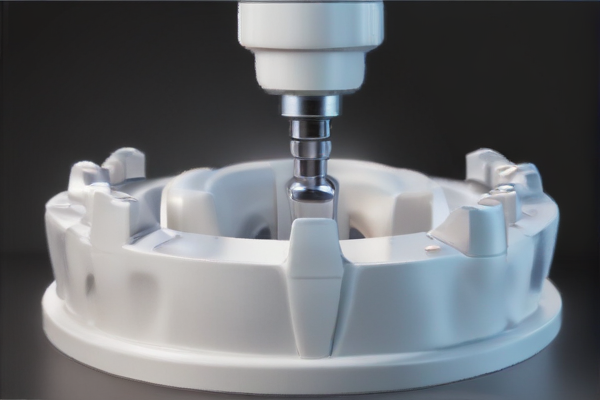
Orthodontics
Orthodontics has significantly benefited from advancements in imaging technology, particularly with the introduction of the dental Cone Beam Computed Tomography (CBCT) scanner. This 3D imaging tool allows orthodontists to capture detailed images of a patient’s craniofacial structure, providing a comprehensive view of the teeth, bones, and soft tissues with high precision. Unlike traditional 2D X-rays, CBCT scans offer panoramic, cephalometric, and axial views, enabling better diagnosis, treatment planning, and the assessment of complex cases. With this detailed anatomical information, orthodontists can identify issues such as impacted teeth, root resorption, and jaw asymmetries with greater accuracy. This technology also aids in the prediction of tooth movement, facilitating the design of custom orthodontic appliances and ensuring optimal treatment outcomes.
Moreover, the CBCT scanner enhances patient communication and engagement. By visualizing their own anatomy in 3D, patients gain a clearer understanding of their condition, the proposed treatment plan, and the expected results. This visualization helps in setting realistic expectations and improving patient compliance. The quick and non-invasive nature of CBCT scanning also minimizes patient discomfort and exposure to radiation compared to traditional methods. Furthermore, CBCT data can be integrated with other digital technologies, such as 3D printing and CAD/CAM systems, to create precise orthodontic appliances. This synergy of technologies accelerates treatment timelines and reduces the need for manual adjustments. In summary, the adoption of dental CBCT scanners in orthodontics has revolutionized diagnostic capabilities, personalized treatment planning, and patient satisfaction, ultimately leading to enhanced clinical outcomes.
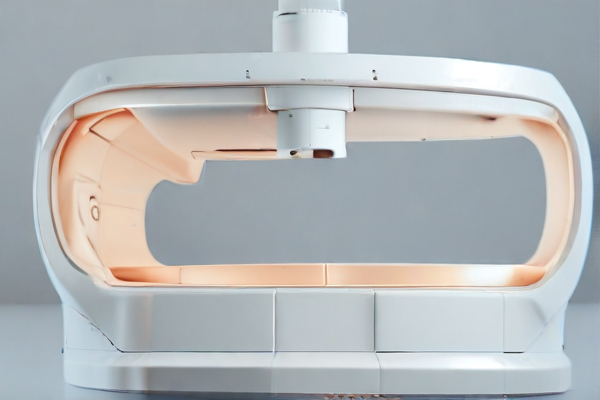
Implantology
Implantology has been profoundly enhanced by the advent of dental cone-beam computed tomography (CBCT) scanners, which provide three-dimensional imaging that is crucial for accurate diagnosis and treatment planning. Unlike conventional two-dimensional X-rays, dental CBCT scanners offer a comprehensive view of the jawbone’s structure, including the height, width, and density, which are essential parameters for assessing implant sites. This detailed imaging allows for the precise placement of dental implants, minimizing the risk of complications such as nerve damage or sinus perforation. The ability to visualize the area in 3D enables practitioners to plan the exact angulation, depth, and position of the implant, thereby improving the chances of a successful outcome and long-term stability of the implant.
Moreover, dental CBCT scanners facilitate a more streamlined and patient-friendly workflow in implantology. The high-resolution images enable the creation of custom surgical guides, which help in executing the implant placement with a high degree of accuracy. This reduces surgical time and enhances patient comfort by making procedures less invasive. Additionally, dental CBCT scans can be performed quickly and efficiently in the dental office, providing immediate results that assist in informed decision-making and timely interventions. Patients benefit from reduced exposure to radiation compared to traditional CT scans, making it a safer option. In essence, the dental CBCT scanner is a game-changer in implantology, driving precision, safety, and patient satisfaction to new heights.
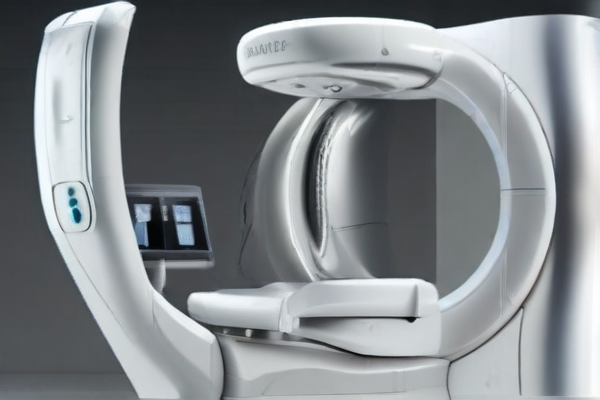
Diagnostic Assistance
The Diagnostic Assistance industry has witnessed substantial advancements with the integration of Dental Cone Beam Computed Tomography (CBCT) scanners, revolutionizing dental diagnostics and treatment planning. Dental CBCT scanners offer three-dimensional imaging capabilities that surpass traditional two-dimensional X-rays, providing clinicians with detailed views of the anatomical structures of the teeth, jaw, and surrounding tissues. This enhanced imaging precision enables a more accurate diagnosis of dental conditions such as impacted teeth, temporomandibular joint (TMJ) disorders, and bone density assessment, ensuring that dental professionals can develop comprehensive and precise treatment plans. The unparalleled clarity in imaging fosters early detection of pathologies, reducing the likelihood of complications and improving overall patient outcomes.
Moreover, the application of Dental CBCT scanners in the Diagnostic Assistance industry translates to significant operational efficiency and patient safety. These scanners provide rapid imaging results, facilitating immediate interpretation and decision-making during clinical appointments. The non-invasive nature of CBCT scans, combined with their lower radiation exposure compared to conventional CT scans, enhances patient comfort and reduces health risks. Furthermore, Dental CBCT technology integrates seamlessly with advanced software platforms, allowing for virtual simulations and preoperative planning, particularly beneficial in complex procedures like dental implant placement and orthodontic assessments. The adoption of this cutting-edge technology not only enhances diagnostic accuracy but also optimizes workflow processes, ultimately leading to more efficient and patient-centered dental care.
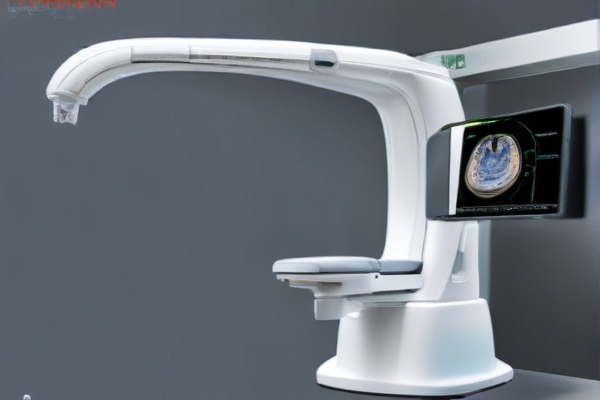
Patient Education and Engagement
The introduction of dental Cone-Beam Computed Tomography (CBCT) scanners into patient education and engagement strategies has revolutionized the way dental professionals communicate with their patients. Unlike traditional two-dimensional x-rays, CBCT scanners provide high-resolution, three-dimensional images of the dental structures, bone, and soft tissues of the maxillofacial region. This advanced imaging technology allows dentists to offer patients a detailed visual representation of their condition, fostering a better understanding of their oral health. By utilizing the CBCT scans, dentists can effectively illustrate the scope and specifics of various dental issues such as impacted teeth, jawbone deformities, or tooth root abnormalities, thus bridging the gap between clinical findings and patient comprehension. The interactive nature of 3D images makes it easier for patients to grasp complex conditions, promoting informed consent and active involvement in their treatment planning.
Furthermore, the use of dental CBCT scanners enhances patient engagement by involving them directly in the diagnostic process. As patients visualize their own dental structures in three dimensions, they often become more invested in their health outcomes and more inclined to follow through with recommended treatments. This increased engagement can lead to improved adherence to dental care routines and post-operative instructions, consequently yielding better clinical results. Additionally, the ability to show progress through successive scans can be a powerful motivator for patients, providing tangible evidence of improvements or the efficacy of interventions. Overall, the integration of dental CBCT technology into patient education provides a comprehensive, visually rich medium that not only aids in patient understanding and engagement but also fosters a collaborative dentist-patient relationship essential for optimal dental care.
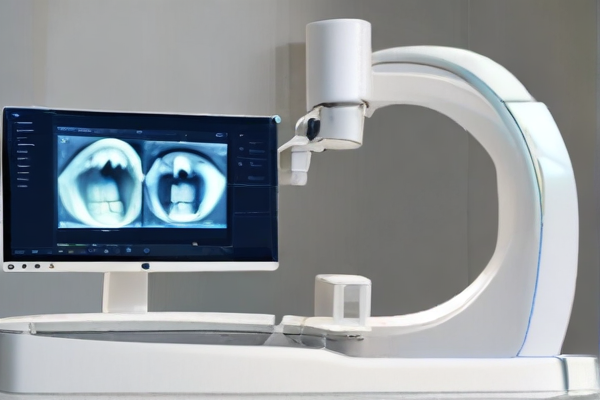
Record Keeping and Monitoring
Record keeping and monitoring are pivotal functions in the application of dental CBCT (Cone Beam Computed Tomography) scanners, ensuring both clinical efficacy and patient safety. Comprehensive record-keeping involves meticulously documenting each scan, including patient identification details, specific scan parameters, and diagnostic findings. This data is crucial for future reference, enabling continuity of care and facilitating longitudinal studies to track the progression of dental conditions. Accurate records also support compliance with regulatory mandates, ensuring that scanning procedures adhere to established safety standards and minimizing the risk of medico-legal issues. Furthermore, detailed records assist practitioners in peer reviews and clinical audits, fostering an environment of continuous improvement and professional accountability within dental practices.
Monitoring the use and performance of dental CBCT scanners is equally essential to maintain high standards of diagnostic imaging. Frequent calibration and maintenance check-ups are critical to ensure that the equipment produces high-quality images without unnecessary radiation exposure. Real-time monitoring systems can alert technicians to potential malfunctions or deviations from optimal operational conditions, thereby preemptively addressing issues that could compromise diagnostic accuracy or patient safety. Additionally, usage data can be analyzed to optimize scanner workflow, reducing redundancy and improving patient throughput. By integrating robust monitoring protocols, dental clinics can make informed decisions on equipment upgrades and resource allocation, ultimately enhancing the overall quality of patient care.



Dental Cbct Scanner FAQ Tips
Product Manufacturing FAQ
FAQ for Manufacturing Dental CBCT Scanner Quality Work from SourcifyChina Factory
Q: What is a Dental CBCT Scanner?
A: A Dental Cone Beam Computed Tomography (CBCT) Scanner is an advanced imaging device used by dentists to produce 3D images of teeth, soft tissues, nerve pathways, and bone in a single scan.
Q: Why choose SourcifyChina Factory for manufacturing Dental CBCT Scanners?
A: SourcifyChina Factory offers high-quality manufacturing services with state-of-the-art technology and strict quality control measures. Our expertise ensures reliable, durable, and precise CBCT scanners tailored to meet industry standards.
Q: What quality control measures are in place at SourcifyChina Factory?
A: We implement stringent quality control processes including raw material inspection, in-process quality checks, and final product testing to ensure each CBCT scanner meets stringent international standards.
Q: Can you provide customization options for Dental CBCT Scanners?
A: Yes, SourcifyChina Factory offers customization options to meet specific market and operational needs. We can modify design specifications, software integration, and other features as per customer requirements.
Q: What are the lead times for manufacturing Dental CBCT Scanners?
A: Typical lead times can vary depending on order complexity and volume. However, our efficient production processes aim to deliver high-quality CBCT scanners within 4-8 weeks from order confirmation.
Q: How does SourcifyChina Factory ensure competitive pricing?
A: We achieve competitive pricing through efficient manufacturing processes, bulk purchasing of materials, and innovative cost-saving techniques without compromising on the quality of our CBCT scanners.
Q: Do you offer after-sales support?
A: Absolutely, we provide comprehensive after-sales support including installation assistance, maintenance services, and technical support to ensure optimal performance of our CBCT scanners.
Q: What certifications do your Dental CBCT Scanners have?
A: Our Dental CBCT Scanners comply with international standards and are certified by regulatory bodies such as CE, ISO, and FDA, ensuring they meet the highest quality and safety benchmarks.
Q: How can I place an order or get a quote?
A: You can contact our sales team through our website or by email. Provide us with your specifications, and we will offer a detailed quote and guide you through the ordering process.
Product Manufacturing Tips
When considering the manufacturing of dental CBCT (Cone Beam Computed Tomography) scanners through SourcifyChina factory, there are several key tips to ensure quality, efficiency, and compliance:
1. Identify Reputable Factories: SourcifyChina has access to numerous factories. Ensure you work with those having a proven track record in medical equipment manufacturing, particularly in dental imaging technology.
2. Regulatory Compliance: Dental CBCT scanners must meet stringent international health and safety standards. Verify that the manufacturer complies with ISO 13485 standards for medical devices and has necessary certifications like CE or FDA approval.
3. Quality Control: Implement rigorous quality control measures. Regular factory audits, pre-shipment inspections, and testing phases are crucial. Ensure the factory has advanced testing equipment for product validation.
4. Technological Capabilities: The manufacturing facility should be equipped with the latest technology in electronics, imaging software, and mechanical components essential for high-precision CBCT scanners.
5. Material Sourcing: Use top-quality materials resistant to wear and tear. High-grade metals and specialized plastics must withstand the operational stresses of dental imaging.
6. Communication and Collaboration: Establish clear communication channels. Working closely with the factory, through regular updates and meetings, ensures that your specifications are precisely followed.
7. Intellectual Property Protection: Ensure that your designs, software, and intellectual property are protected legally through Non-Disclosure Agreements (NDAs) and other legal instruments.
8. Cost Management: While China offers cost-effective manufacturing, it’s vital to balance cost-saving with quality. Transparent pricing and detailed quotations can help manage costs effectively.
9. After-Sales Support: Consider the factory’s capability for after-sales service, including provision of spare parts, technical support, and warranty services, which are essential for maintaining product reliability.
10. Sustainability and Ethical Practices: Favor manufacturers committed to sustainable practices and ethical labor standards, contributing positively to corporate social responsibility goals.
Leveraging these tips ensures that you get a high-quality dental CBCT scanner that meets your business needs and regulatory standards.
Sourcing FAQ
Q1: What is the quality assurance for the dental CBCT scanners from SourcifyChina factory?
A1: SourcifyChina factory ensures high quality by adhering to international standards such as ISO and CE certifications. Each scanner undergoes rigorous testing and quality checks before shipping.
Q2: How do I place an order for a dental CBCT scanner from SourcifyChina factory?
A2: You can place an order by contacting our sales team through our website or via email. They will guide you through the process, including product selection, customization options, and payment.
Q3: What is the lead time for delivery?
A3: The lead time typically ranges from 4 to 6 weeks, depending on the customization and order quantity. Shipping times may vary based on your location and the shipping method selected.
Q4: Are there customization options available?
A4: Yes, SourcifyChina offers various customization options to meet your specific requirements, including software specifications, user interface language, and hardware configurations.
Q5: What are the payment terms?
A5: The common payment terms are 30% advance payment to confirm the order and 70% before shipment. We accept various payment methods, including wire transfers and credit card payments.
Q6: How is the shipping handled?
A6: We offer multiple shipping options such as air freight, sea freight, and express delivery. Our team will assist you in selecting the most convenient and cost-effective shipping method.
Q7: Is there a warranty on the dental CBCT scanners?
A7: Yes, we provide a standard 12-month warranty on all dental CBCT scanners. Extended warranty options are also available upon request.
Q8: What after-sales support is available?
A8: SourcifyChina offers comprehensive after-sales support including installation assistance, technical training, software updates, and troubleshooting services.
Q9: Can I request a demo before purchasing?
A9: Absolutely. We can arrange for a virtual demo or, depending on location and availability, an on-site demonstration to help you better understand the product.
Q10: How do I get in touch with SourcifyChina customer support?
Sourcing Tips
Sourcing a dental CBCT (cone-beam computed tomography) scanner from SourcifyChina factory involves several key steps to ensure quality, price, and reliability. Here are essential tips:
1. Research and Identify Reputable Factories:
– Use platforms like Alibaba, Made-in-China, or Global Sources to find factories that specialize in dental imaging equipment.
– Look for factories with high ratings, positive reviews, and verified certifications (ISO, CE, FDA).
2. Verify Credentials:
– Ensure the factory has experience in manufacturing medical and dental equipment.
– Request quality certificates and compliance documents to confirm the equipment meets international standards.
3. Request Detailed Quotations:
– Ask for a detailed breakdown of costs, including the price of the scanner, shipping, and any additional fees.
– Compare quotes from multiple suppliers to ensure competitive pricing.
4. Check for Customization Options:
– Inquire if the factory can customize the CBCT scanner to meet specific needs or regulatory requirements in your country.
5. Evaluate Sample Products:
– Request a sample unit or visit the factory (if possible) to inspect the quality and functionality of the scanner.
– Test the sample to ensure it meets your performance expectations.
6. Assess After-Sales Support:
– Confirm the availability of technical support and warranty services.
– Ensure the factory provides comprehensive user manuals, software updates, and maintenance support.
7. Negotiate Terms:
– Discuss payment terms, delivery timelines, and potential bulk order discounts.
– Negotiate favorable terms to secure a good deal.
8. Secure a Written Contract:
– Draft a detailed contract outlining all agreed terms, including specifications, delivery schedules, payment terms, and after-sales support.
– Ensure both parties sign the contract to formalize the agreement.
By following these tips, you can effectively source a high-quality dental CBCT scanner from SourcifyChina factory, ensuring a valuable addition to your dental practice.

